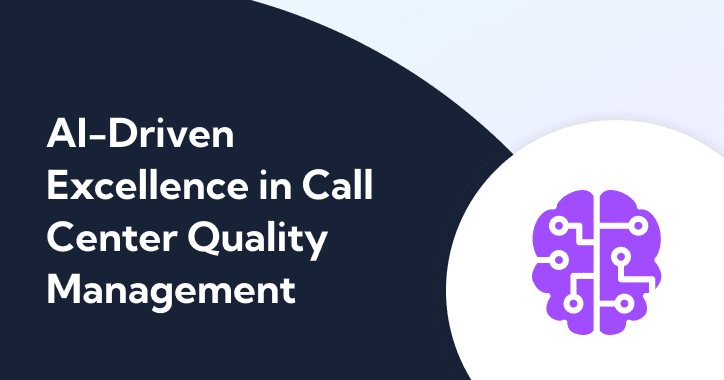
Sheri Greenhaus
Managing Partner, CrmXchange
Between self-service libraries and autonomous chatbots, nearly 70% of consumers attempt to resolve their issues independently before reaching out to a contact center. Yet, 75% of consumers still choose to interact with a real person, even as the technology for automated solutions improves.
Why?
Because the need for human touch is real, and it’s transformed the agent experience. Let’s explain.
From First Touch Resolution to First Call Resolution
To date, more consumers would prefer to contact customer service by phone than they would all digital service channels combined. Though digital channels like interactive chat have advanced in recent years, there are simply some issues that cannot be solved without human interaction.
A change of address? A bot can handle that. An inquiry about branch hours? IVR software has that covered. But what about more complex questions? When technology doesn’t rise to the occasion, agents will. Hence, why operators are discovering that when customers do phone into the contact center, it’s an entirely new level of agent — and agent experience — that’s required.
Rather than first touch resolution through a self-service tool, customers are demanding first call resolution with contact center agents. This trend, in part with pandemic implications and a desire for frontline involvement in operations, has accelerated an evolution within the contact center.
3 Variables of the Agent Experience Transformation
As the expectations of the contact center continue to evolve, so must the agent experience. Now more than ever, agents primarily rely on three variables, including instant access to customer data, flexible and agent-inspired scripting, and the ability to grow within the contact center environment.
1. Readily Available Customer Information
With the technology that’s available today, agents are finding that when customers do call into the contact center, the queries are much more sophisticated. They’re more challenging questions that require the agent to have that information at their fingertips. Agents must have everything they need to know about that person because that person has an issue they could not solve themselves.
In fact, 71% of customers expect contact centers to collaborate internally so they don’t have to repeat themselves on a call. Another 76% anticipate personalization, which includes account type and status, order status and history, and knowledge of their preferred contact method. Fortunately, organizations now manage three times the amount of customer data than they did five years ago.
The key is to make this data readily accessible to agents. Agents who can leverage available customer data experience 36% faster resolutions and a 79% reduction in customer wait time, while also solving four times the customer requests. The result? A more empowered agent experience that enables each frontline rep to have the confidence to securely navigate any customer query.
2. Agent Involvement in Flexible Scripting
Some of the best scripts are not scripts — they’re guides — and agents would agree. There’s nothing more annoying to a customer than knowing a script is being read. How many times can an agent say, “Yes, and let me restate what you just told me,” on one call? I don’t know if those of us that do this day in and day out are more sensitive to it, but I’m sure everybody else is annoyed by it!
If the customer is really angry at something, and you finally calm them down and they say, “Okay, I’m going to stay with you,” you don’t necessarily want to cross-sell them at that point. But if that’s in your script, you may not have the option. You may have to say that, even though you barely held onto this customer. So, if you have tight scripting, you have to let the agent have some flexibility.
Considering that approximately 64% of agents want to change their script, including the naturalness and tone, it’s time to let agents have a say. Agents who report the lowest involvement in writing their company’s script are the most likely to want to change everything about it, a clear indication that a lack of agent involvement likely results in a customer disconnect on a call.
3. Pathways for Agent Growth and Fulfillment
What’s more rewarding at the end of the day as an agent, doing the same thing over and over again or finding something challenging and actually helping the customer? The majority of agents would say the latter. In fact, in a survey of over 2,000 contact center employees, more than 20% aged 18 to 44 are motivated by learning a new skill and opportunities for advancement.
Contact center agents with the highest levels of job satisfaction joined the industry because they saw a lot of opportunities for career advancement in their new roles. Agents who progress towards more complex calls fulfill a need to progress in the industry or move upward in the organization.
It’s imperative for operators to nurture an agent experience of growth and fulfillment to empower agents. Empowered agents work to deliver first agent resolution, first call resolution, and low call handle time. Even more, contact centers that learn how to empower and support agents can better mitigate the steep costs involved with employee attrition and hiring and training a replacement.
Ongoing Support for Contact Center Agents
Organizations have begun to realize what an integral role the contact center plays. As such, the job of the agent is going to change. It will become a higher level, higher skill job. It’s up to contact centers to supply agents with the tools and resources they need to enhance that skill set. For all the resources you need, head to the CrmXchange community and Balto Resources Hub.






